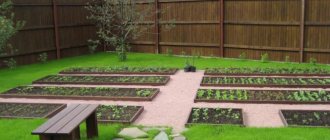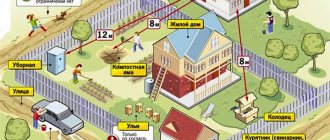The decision to purchase a plot of land is often made for its subsequent use as a summer cottage, planting a vegetable garden, or for building a private house. There are quite a lot of advertisements for sale, you can choose the location and reasonable price. But it makes no sense to overpay intermediaries if you find a plot directly from the owner.
It is important in the matter of purchasing a land plot to check the title documents from the owner, as well as the correct execution of the transaction. The boundaries of the site must be clearly defined by law to avoid any problems with neighbors or the municipality. Land acquired by citizens through squatting cannot be officially registered and registered in the cadastral register.
The seller can be not only the owner of the plot, but also a realtor or other authorized person. In the first case, it is necessary to check the availability of a license to carry out activities, in the second - a notarized power of attorney. It is mandatory to indicate in the power of attorney the right to represent the interests of the owner when selling this particular plot of land.
Law
Legislative acts regulating transactions with real estate and, in particular, land plots are:
- Civil Code of the Russian Federation;
- Land Code of the Russian Federation.
Registration of ownership of an acquired land plot is also subject to the norms of Law No. 122-FZ (valid until 01/01/2020), which regulates the principles of registration of the arisen right to a real estate property. According to its rules, the transaction does not require notarization. But there are a number of cases when it is mandatory:
- when purchasing land from a legal entity;
- in case of shared acquisition of a plot of land, regardless of its permitted use;
- with the participation in the transaction of a child under the age of majority, as well as a citizen declared incompetent.
Agricultural land: types of permitted use
There are the following types of agricultural land use:
- areas occupied by roads (with rights-of-way);
- plots for outbuildings;
- lands with forest belts protecting fields and forest areas for other purposes);
- pastures;
- hayfields;
- arable land;
- fallow lands;
- gardens.
The owner or tenant of such lands is engaged in growing products on them only for his personal needs, without selling the resulting harvest to citizens or enterprises on a commercial basis (vegetable gardening, gardening, and personal farming are allowed). You can plant a garden or make a vineyard, arrange a pasture or arable land, or organize an apiary.
The creation of a fishery, poultry and domestic animals is allowed. You can build residential premises for recreation (without registration) - a permanent house, temporary buildings, agricultural infrastructure facilities. The construction of pipelines, power lines, highways, utility networks and communications is also permitted. It is also possible to organize protective plantings (hedges, forest belts).
Land can become fallow on purpose (for example, to increase soil fertility) or involuntarily (due to soil erosion, long-term pollution, man-made or natural disaster).
What needs to be checked?
1. In order not to get a headache along with the land, you should carefully read the property documents; this is necessary:
- to find out whether a person is actually the owner;
- in order to know that the plot of land is not under arrest or encumbrance.
To clarify these circumstances, you will need to study the extract from the Unified State Register for the specific plot of interest.
Ordering an extract from the USRN in the form of an electronic document is the most convenient way. We recommend the service on this page, it sends the finished document within from a few minutes to 3 hours. The document has an electronic signature of the registrar (EDS), confirming the accuracy of the information received from an official source. To obtain an extract, you will need to pay a state fee of 250 rubles.
An extract from the Unified State Register of Real Estate, which was recently ordered here.
2. Additionally, request a boundary plan from the owner and check them with an extract from the Unified State Register of Real Estate. Land surveying is necessary in order to accurately know the boundaries of the site and coordinate them with neighbors.
It is important to pay attention to the category of permitted land use.
3. If it is planned to build a residential building on it, it is necessary to have an individual housing construction. It is permissible to build country houses in gardening partnerships.
4. In addition to permission for individual housing construction for the site planned for the construction of a residential building, it is necessary to pay attention to the infrastructure next to it. These are the availability of travel, distance from roads, and the presence of communications near the plot.
If the right to the plot has not been established, it is better to refrain from the transaction, as problems may arise with its registration. This may not only be difficulties with land surveying, but also the presence of encumbrances, outstanding tax debt, etc.
You can entrust the verification of documents to a lawyer, then you can get from him:
- full historical information on the origin of rights and alienation;
- confirmation of the fact of land surveying;
- the presence or absence of encumbrances or restrictions on the land, as well as arrests and claims of third parties;
- Are there any economic activities on the land being sold (waste disposal, resource extraction, etc.)
If you choose this option, please contact our legal consultant.
What are gardening non-profit partnerships
SNT are intended for farming or construction of residential buildings. They are located within populated areas or beyond their boundaries. The partnerships include lands for any purpose. The most common are agricultural.
When the owner is in a partnership, he has the right to build various non-residential objects: for example, a bathhouse. The plot is also suitable for the construction of various real estate.
IMPORTANT! The main problem is the difficulty of registration in houses located on the territory of SNT. In some cases this may lead to litigation.
Required documents
The main document confirming the completion of the transaction is the purchase and sale agreement of the land plot between the seller and the buyer. But the owner must have the following documents before selling:
- seller's identification card;
- a document of title giving the opportunity to sell the plot. This is a land contract, a gift agreement, a certificate of inheritance, etc. It is this that is the basis for registering property rights;
- an extract from the Unified State Register as proof that the site has been registered with Rosreestr;
- boundary and cadastral plans;
- a certificate of absence of land tax debts, which is issued by the Federal Tax Service;
- consent of the spouse if the plot is in joint ownership. The document must be certified by a notary.
The seller must provide the listed documents in originals. The buyer needs to verify all the data specified in them: owner details, cadastral number of the plot, etc. If there are discrepancies, you should refuse the transaction, it is likely that fraudulent activity can be detected here.
When purchasing land from a legal entity, check it on the official website of the Federal Tax Service and request statutory documents.
An extract from the Unified State Register of Real Estate gives a clear idea of the removal of the boundaries of the land plot and confirms that the land surveying process has been completed. Therefore, ask the seller for this document, and to check the boundaries on the ground, you can use the public cadastral map.
Only after making sure that all documents are in order can you begin to draw up and sign the purchase and sale agreement.
Designation of land for summer cottage construction
In the category of dacha land, or land for garden and dacha construction, there are two types of land:
- Agricultural land. This option is the most common for organizing gardening communities and partnerships. Such lands are most often allocated on a significant scale, divided into separate plots and assigned to people who want to join such a cooperative;
- If there are land areas suitable for gardening and dacha communities, and a favorable attitude from local authorities, it is possible to obtain land for dacha construction within the boundaries of a populated area. However, this is an exception rather than a regular practice.
The procedure for purchasing a land plot in 2021
Conventionally, the scheme for acquiring a land plot can be divided into several stages:
1. Search for a plot of land from the owner.
Search for advertisements on the Avito website. It is also possible to place an advertisement about your intention to buy a plot, indicating the required parameters. In this case, it is better to immediately indicate that you are interested in a plot sold only by the owner. Then you won't be bothered by intermediaries.
2. Inspection of the site before purchase.
Of course, no one intends to buy a “pig in a poke,” because the ad may indicate something completely different from what actually turns out to be. Call the seller and set up a meeting time. At the same time, ask to bring with you the necessary documents so that you can verify the accuracy of the data specified in the advertisement and in fact.
Measure the area yourself and check the results with the documents. This is necessary in case the certificate was received several years ago, but during this period there was an illegal redistribution of borders with neighbors.
Here you can bargain and try to reduce the price. It is no secret that the seller wants to earn more from the sale and sets the price a little higher in advance. The buyer can discuss the possibility of reducing it on the spot.
3. Checking documents.
Before agreeing to a deal, you need to review the documents and match the data specified in them. Pay attention to the correspondence of the cadastral number in all documents. Be sure to specify the category of land to which this plot belongs.
4. Leave a deposit with the seller.
If the documents are in order and negotiations on the price have taken place, draw up a preliminary agreement, where you indicate the amount of the deposit. This is a kind of guarantee that the seller will not refuse the deal. Otherwise, he will have to return not only the deposit itself, but also the same amount in addition, i.e. double deposit size.
(read how to fill it out correctly here).
5. Conclusion of the final purchase and sale agreement.
Any transaction is documented through an agreement between the parties. The law does not provide for a strict form of the contract, but it is important to ensure that it contains the required details.
(read about correct filling here).
After signing the document by both parties, the required number of copies are transferred for registration to Rosreestr or MFC (one for each party and an additional copy for Rosreestr).
While waiting for your turn, we recommend that you carefully re-read the text of the document, pay the state fee and make a copy of the receipt.
Once you get to the registrar, sign all copies of the contract in his presence and give the money to the seller. In this case, the seller must write in each copy of the document with a pen with blue ink the text about the amount received in full. If the value of the plot under the contract is underestimated (in cases where the land is less than 5 years old), then the remaining funds can be transferred by receipt. In a week, Rosreestr will register the transaction and you will receive a stamped agreement at the MFC.
6. Obtaining an extract from the Unified State Register of Real Estate.
You can make sure that ownership of a plot of land has passed to the new owner by ordering an extract after receiving the agreement with a registration mark. This can be done directly at the MFC or through the electronic services of Rosreestr - you can find out more in this article .
Category of land for dacha construction
Territories for the construction of summer cottages are one of the categories permitted for the construction of land, but most developers often do not have the necessary information on the construction of residential buildings on these lands.
According to current domestic legislation, all territories are divided into seven types in accordance with their purpose. Within each type, there are usually several legal options for using land. If you are going to purchase a plot of land for summer cottage construction, what it is, you simply need to know. It is not so important what type of housing you want to build on the land, but the status of this very land is important. Most people without hesitation purchase various plots of land, planning to build their homes on them, and subsequently face a huge number of legislative nuances. To avoid getting into a stupid position, you should familiarize yourself in advance with all the intricacies of owning country land.
Features of purchasing a plot in SNT
When purchasing a plot of land from a gardening non-profit partnership (SNT), you should know that the owner does not have the appropriate certificate for it, but has the right to dispose of it. In this case, the owner of the plots is SNT. When selling a plot, the previous owner must leave the partnership by submitting an application, and the new owner must enter. If you wish, you can not join it, but then enter into an agreement for the use of resources and pay for them separately within the framework of the agreement.
Purchasing a plot of land in SNT has several features:
- the price is significantly lower than with the permitted use for individual housing construction, since it has agricultural purposes;
- you can build a house on the land in a partnership;
- when SNT is located within a populated area, it is possible to transfer the category of land plot to individual housing construction;
- transferring the land to another category will require a lot of time and money, but without this the house will not be recognized as residential and there will be no opportunity to register there;
- construction, as well as all approvals for the land and house, may become more expensive than with individual housing construction.
IF THE VIOLATION WAS SHORT-TERM.
A conscientious business entity, if it is revealed that the land plot is not being used for agricultural purposes, tries to correct the violation as quickly as possible. Perhaps he will be able to do this in the same tax period when the violation was recorded.
On this issue, the Letter of the Ministry of Finance of Russia dated August 23, 2017 No. 03-05-04-02/54186[3] notes that the Tax Code of the Russian Federation does not define the procedure for applying the tax rate for a land plot classified as agricultural land or land within zones agricultural use in populated areas, which is not used for agricultural production, if the authorized body of state land supervision during the tax period identified an offense related to the non-use of the land plot for agricultural production, and the taxpayer eliminated this offense in the same tax period.
Officials recalled that, according to paragraph 7 of Art. 3 of the Tax Code of the Russian Federation, all irremovable doubts, contradictions and ambiguities in acts of legislation on taxes and fees are interpreted in favor of the taxpayer.
In this regard, in their opinion, in this case, the calculation of the amount of land tax should be made according to the tax rates established by the regulatory legal acts of the representative bodies of municipalities (laws of the federal cities of Moscow, St. Petersburg and Sevastopol) in accordance with paragraphs. 1 clause 1 art. 394 Tax Code of the Russian Federation.
That is, during the entire tax period, the reduced tax rate established for agricultural land should be applied.
Features of purchasing land for individual housing construction
The advantage of land plots with permitted use for individual housing construction is, first of all, infrastructure. These are territories within populated areas. Accordingly, the purchase of such a plot has its own characteristics:
- be sure to check the presence of a boundary plan to avoid disputes with neighbors regarding the boundaries of the site;
- the ability to connect to communications, which allows you to build a residential building and use the central networks of the settlement;
- after construction, the house can be registered and put into operation, which will make it possible to live in it and register;
- It is first necessary to clarify whether the site is located in an environmental protection zone, which will become a restriction for its use.
Individual housing construction (individual housing construction)
Land of this type is in greatest demand, because... The priority purpose of individual housing construction land is the construction of residential buildings on it. Individual housing construction is an order of magnitude more expensive than the above-mentioned plots.
Advantages of individual housing construction
1.The main advantage is its convenient territorial location.
2. It is not difficult to register, register and obtain the official address of such a house.
3. The plot is intended directly for residence, therefore, there should be no problems with obtaining a tax deduction.











